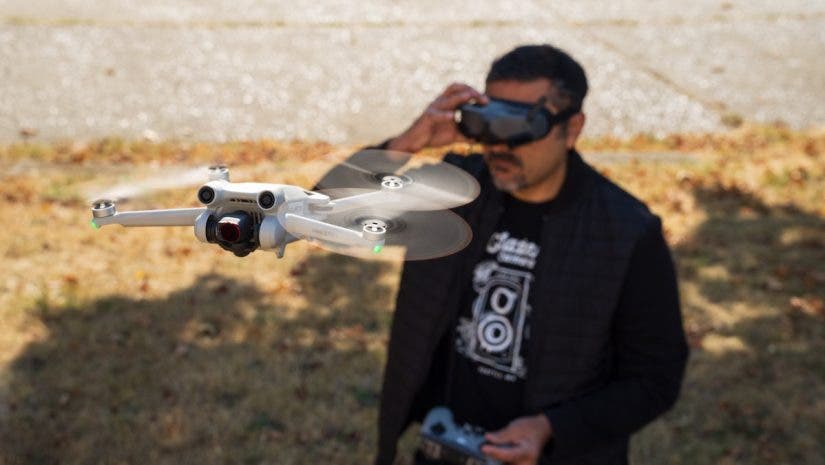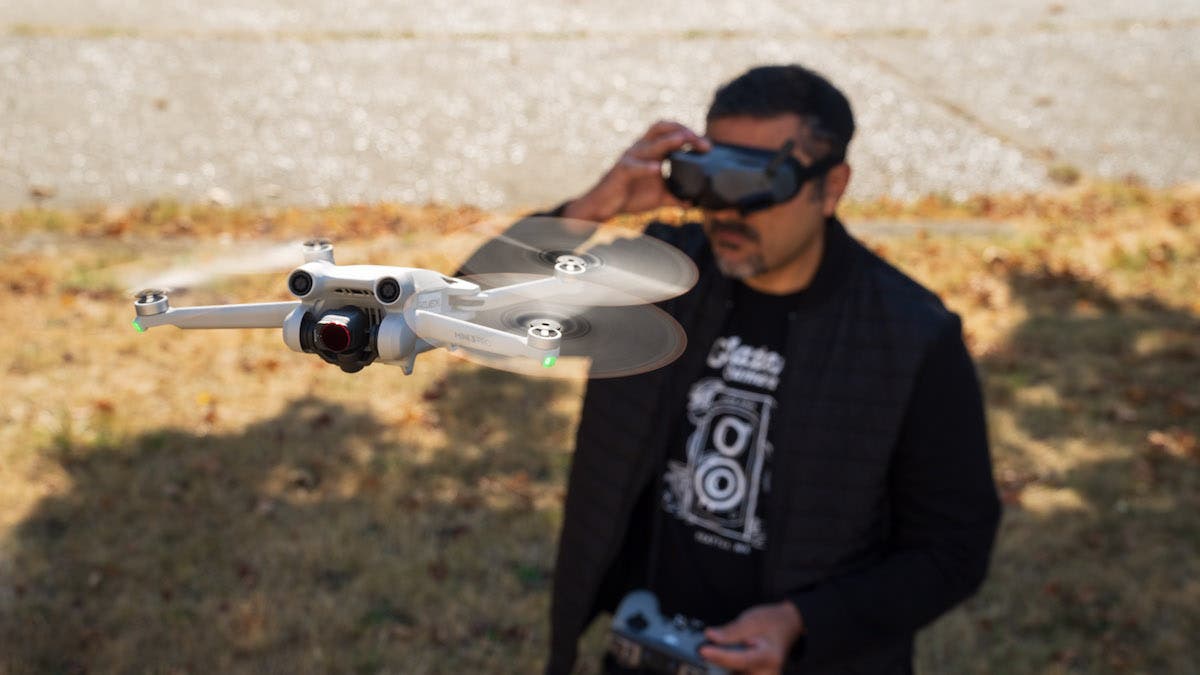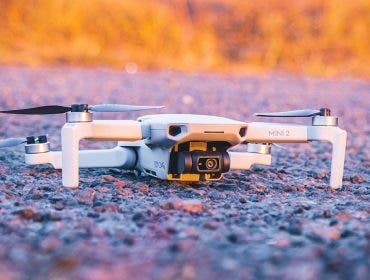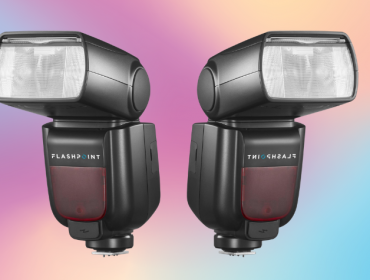Rapid advancements in drone technologies have created exciting opportunities for new drone pilots to learn how to fly, using smaller, safer, and more capable drones than ever before. Although, there are some important drone safety practices to consider when learning to fly your drone for the first time.
Given the multitude of currently available drone options and their highly advanced capabilities, it’s a good idea for new drone pilots to build their flight skills on a strong safety foundation. In this article, we’ll explore the ways that beginner drone pilots can adhere to fundamental drone safety practices.
We’ll discuss some of the key operating requirements for recreational and commercial drone flights, how to obtain a drone license, and how to maintain compliance with established FAA airspace rules and regulations.

Obtaining a Drone License
Drone pilots must always comply with the FAA’s drone licensing requirements when flying. There are different rules and requirements for flying a drone depending on if you’re flying for recreation or commercial purposes.
Recreational Purposes
New drone pilots who want to fly exclusively for recreational purposes do not need to obtain a license to fly. There are, however, some basic compliance requirements for new recreational drone pilots. These basic requirements fall under the FAA’s “Exception for Limited Operation of Unmanned Aircraft” (USC 44809).
- You must register any drone that weighs over 250 grams with the FAA. Registration is $5 at the FAA Drone Zone website, and covers three years of recreational flights for each registered drone.
- You must take the Recreational UAS Safety Test (TRUST). This is a free online training that takes less than an hour, and can be taken from any of the approved FAA test administrators.
Commercial Purposes
Flying a drone to create media for commercial use falls under the FAA’s 14CFR Part 107 code of federal regulations. New drone pilots that intend to fly their drones for commercial productions must ensure that they obtain a Remote Pilot Certificate from the FAA and meet the following basic requirements for becoming a drone pilot.
- Be at least 16 years old.
- Be able to read, speak, write, and understand English.
- Be in a physical and mental condition to safely fly a drone.
- Pass the initial aeronautical knowledge exam: “Unmanned Aircraft General – Small (UAG)”
Obtaining your Remote Pilot Certificate will ensure that you understand the regulations for commercial flight operations, follow the FAA operating requirements, and practice the essential procedures for flying a drone safely.
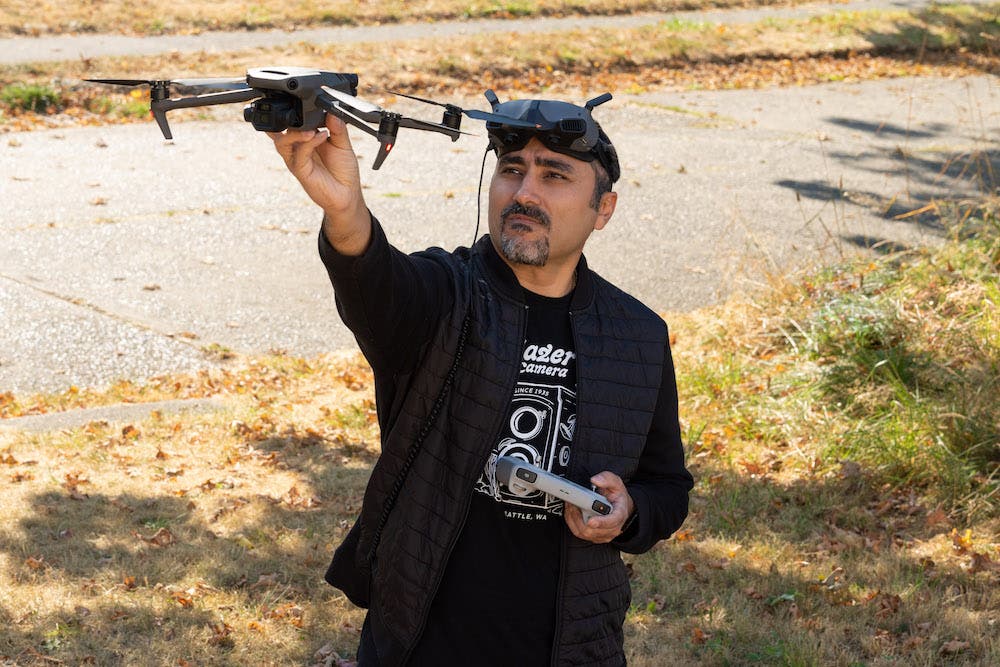
Remote Pilot Certificate
New drone pilots looking to obtain a Remote Pilot Certificate will need to take the following steps in order to prepare for taking the initial aeronautical knowledge exam.
- Obtain an FAA Tracking Number (FTN) by creating an Integrated Airman Certification and Rating Application (IACRA) profile.
- Study the 14CFR Part 107 operating rules and requirements.
- Schedule an appointment with a FAA-approved Knowledge Testing Center.
- Pass the initial aeronautical knowledge test: “Unmanned Aircraft General – Small (UAG)”.
- Complete FAA Form 8710-13 for a remote pilot certificate (FAA Airman Certificate and/or Rating Application) using the electronic FAA Integrated Airman Certificate and/or Rating Application system (IACRA).
- Pass a TSA security background check.
Once all of the above steps are complete, new drone pilots will receive an email from the FAA with instructions for printing a copy of the temporary remote pilot certificate from IACRA. This is followed by a permanent remote pilot certificate in the mail once all other FAA-internal processing has been completed.
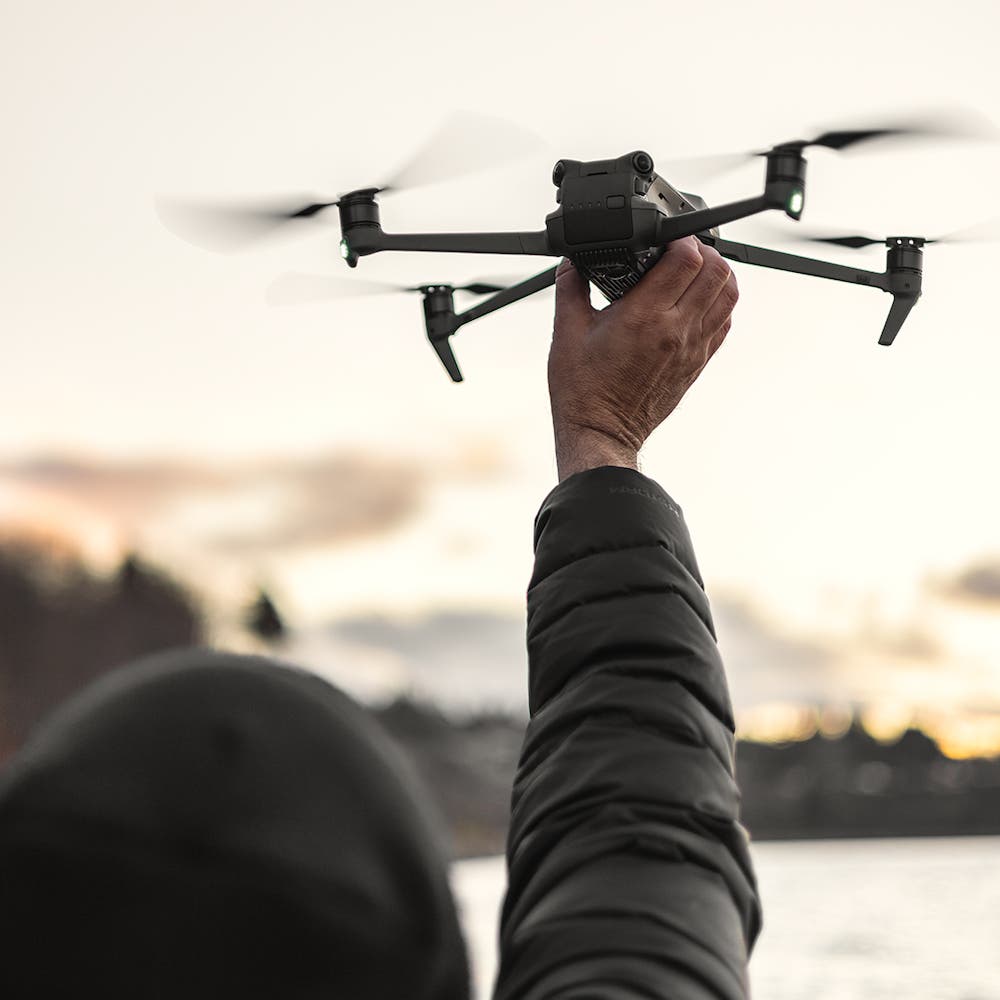
Follow Operating Requirements
Operating requirements vary greatly for recreational and commercial drone pilots. Let’s take a look at how they differ, and some of the requirements for each type of flight operation.
Recreational Use
Recreational drone pilots must adhere to the following operating requirements.
- Fly only for recreational purposes (enjoyment).
- Follow the safety guidelines of an FAA-recognized Community Based Organization (CBO). Note: The FAA has not yet begun officially recognizing CBOs. Recreational flyers are directed to follow the safety guidelines of existing aeromodelling organizations, or to use the FAA’s provided safety guidelines, per Advisory Circular 91-57B.
- Keep your drone within your visual line of sight, or use a visual observer who is co-located (physically next to) and in direct communication with you.
- Give way to, and do not interfere with manned aircraft.
- Fly at or below 400 feet in controlled airspace (Class B, C, D, and E), and only with prior authorization by using LAANCor DroneZone.
- Fly at or below 400 feet in Class G (uncontrolled) airspace. Note: Flying drones in certain airspace is not allowed. Classes of airspace and flying restrictions can be found on the FAA’s B4UFLY app or the UAS Facility Maps webpage.
- Take The Recreational UAS Safety Test (TRUST) and carry proof of test passage.
- Have a current registration, mark your drones on the outside with the registration number, and carry proof of registration with you.
- Do not operate your drone in a dangerous manner.
- Do not interfere with emergency response or law enforcement activities.
- Do not fly under the influence of drugs or alcohol.
Commercial Use
14CFR Part 107 commercial drone pilots must adhere to the following operating requirements.
- Maintain VLOS (visual line of sight) to the drone while flying.
- Do not operate over any persons not directly participating in the operation.
- Always yield the right of way to other manned aircraft.
- Do not exceed a maximum groundspeed of 100 mph, or 87 knots.
- Do not exceed a maximum altitude of 400 feet above ground level (AGL).
- If higher than 400 feet AGL, remain within 400 feet of a structure.
- Do not fly without a minimum weather visibility of 3 miles from your control station.
- Do not conduct operations in Class A, B, C, D and E airspace without ATC (Air traffic Control) permission.
- Operations in Class G airspace are allowed without ATC permission.
- Do not act as a remote pilot in command, or a visual observer for more than one unmanned aircraft operation at a time.
- Do not conduct flight operations from a moving vehicle, unless the operation is over a sparsely populated area.
- Do not carry hazardous materials on your aircraft.
- Do not operate recklessly or without care.
- Conduct preflight inspection of aircraft before each flight, and keep a record of your inspections.
To review the full scope of operating requirements under 14 CFR Part 107, head over to the eCFR website.
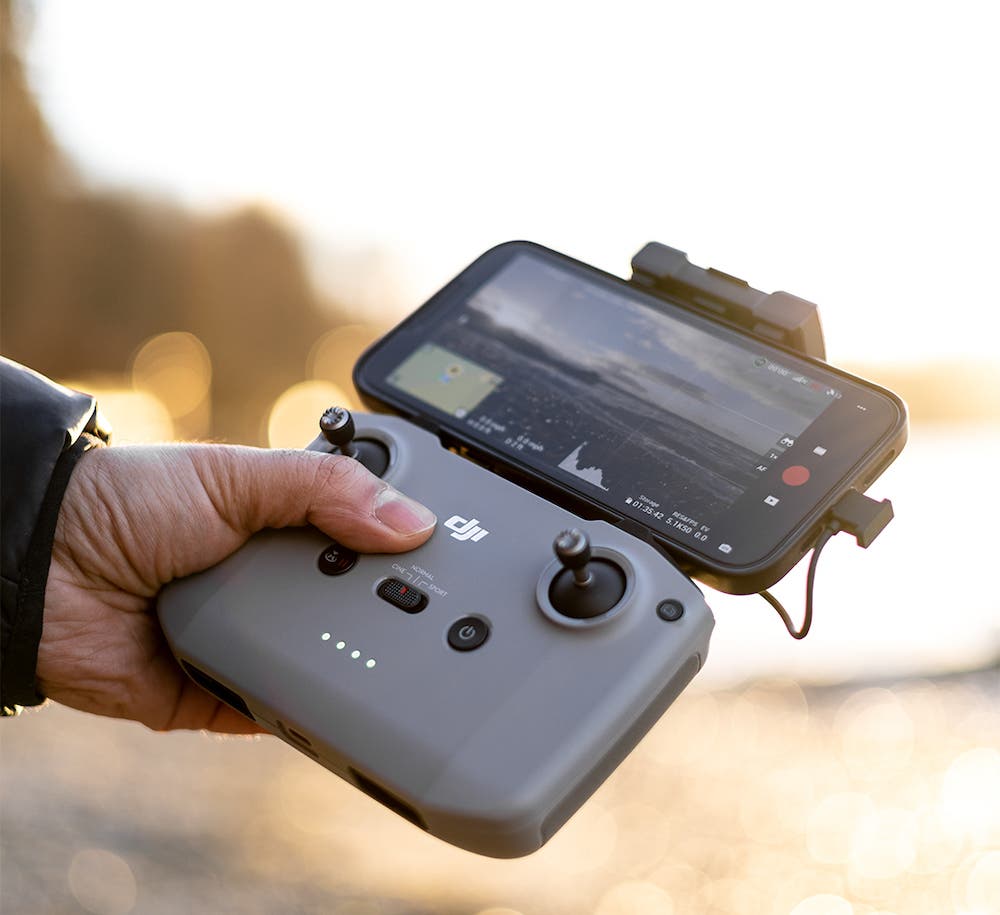
Be Aware of Airspace Restrictions
Understanding airspace classifications is another essential safety practice for new drone pilots. Capturing a simple drone photo or video is not legal in every location. New drone pilots will want to familiarize themselves with the differences in airspace classifications and determine whether flying in a given location is legal. Some may require Air Traffic Control permissions prior to conducting flight operations.
Airspace Classes
The FAA recognizes several classes of controlled airspace, including Class A, B, C, D, E, and G. The level of restrictions in each airspace vary. A is the most restrictive and G is the least restrictive airspace. Classes A through D require ATC permission, and are generally far above 400 ft AGL.
The most common airspace for new drone pilots to fly in will be class G, or uncontrolled airspace. This is the portion of airspace that in not designated on the UAS Facility Maps webpage as A, B, C, D, or E. Conducting flight operations in Class G airspace does not require ATC authorization. It is considered safe for drone flight operations, provided that new drone pilots adhere to all other operating requirements for recreational or commercial flight operations, and abide by any potential restricted airspaces or Temporary Flight Restrictions.
Common Airspace Restrictions
Another important safety practice for new drone pilots is the adherence to common airspace restrictions. There are a number of common airspace restrictions for drone flights in the U.S., including:
- Stadiums and sporting events – Drone flights are prohibited starting one hour before, and ending one hour after any MLB, NFL, NCAA Division 1 Football, or NASCAR/Indy Car races.
- Airports – Drone flights should be avoided near airports in order to protect manned aircraft and to avoid the creation of a safety hazard as a result of your drone entering controlled airspace without ATC authorization.
- Military operation areas are restricted airspaces due to their special national security designation and are prohibited from drone flight operations.
- National parks are another restricted airspace for drones, as they are protected wilderness sanctuaries for wildlife and endangered species.
- Temporary Flight Restrictions, aka (TFR’s), prohibit drone flight operations in specific areas for specific periods of time, and are dynamically communicated to drone pilots through the use of Notice To Airmen, or NOTAMs.
- The airspace around Washington D.C. is considered a “national defense airspace” and has a strict request and permission requirement for drone flight operations. Only aircraft with FAA and TSA authorization may fly within the 30-mile radius of Ronald Reagan Washington National Airport, which is one of the most restrictive airspaces in the U.S. and is governed by a Special Flight Rules Area, or (SFRA).
These are all examples of restricted airspaces, where new drone pilots will want to avoid. This list is not exhaustive. New and seasoned drone pilots will need to stay current with compliance requirements to ensure that they do not conduct drone flight operations in any additional restricted airspaces not listed above.
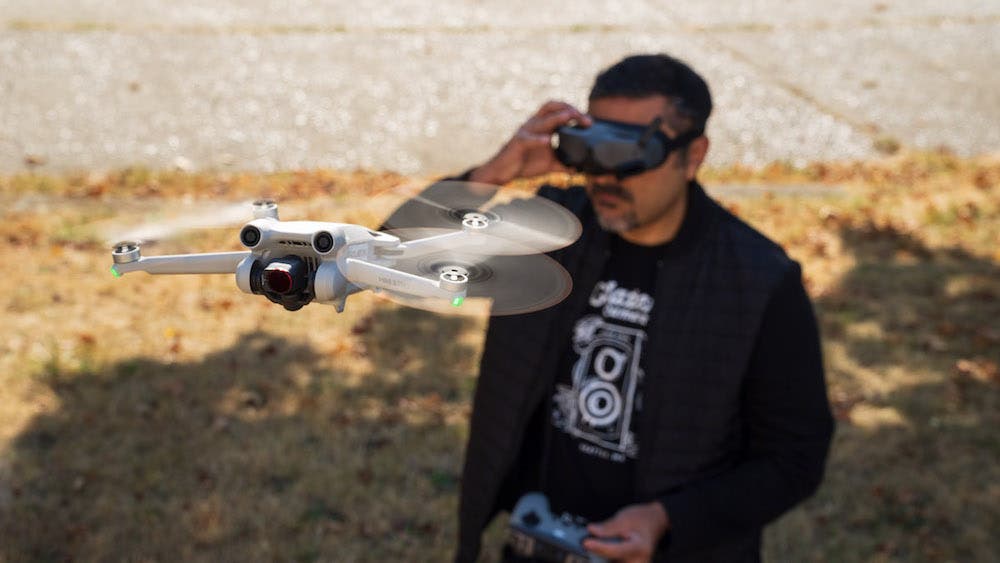
Conclusion
New drone pilots have many choices to make when learning to fly a drone for the first time. There are a lot of important things to consider, including personal and professional goals, features, performance, budget, and most importantly — safety.
Becoming a skilled drone pilot can offer many creative and professional benefits. Although, it must also be treated with a higher level of care and responsibility. Being a safe and responsible drone pilot will ensure that more creatives and hobbyists can enjoy the freedom of flight. It also ensures that drones can continue to develop and expand our horizons in our creative and scientific endeavors.
New drone pilots should continually stay abreast of all of the potential airspace limitations, operating requirements, and other safety precautions in the locations that they want to conduct flight operations. There are useful apps like the FAA’s, B4UFLY app, and Google’s OpenSky app that can help new drone pilots to always operate with safety in mind.
To learn more about best practices for operating your drone as a new drone pilot, checkout more of our 42West drone education.
